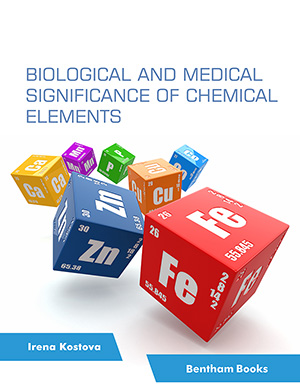Abstract
Background: Breast cancer is the prominent reason of death in women worldwide, and the cases are increasing day by day. There are many FDA-approved drugs for treating breast cancer. Due to drug resistance, and problems in selectivity, there is a need to develop more effective agents with few side effects. Indole derivatives have demonstrated significant pharmacological potential as anti-breast cancer agents. Further, chalcone derivatives incorporating heterocyclic scaffolds play a significant role in medicine. Indole-chalcone-based compounds offer the potential for improved biological activity and enhanced drug-like properties. It prompted us to explore the synthesis of Indole-Chalcone derivatives targeting estrogen receptor alpha (ER-α) to discover potent anti-breast cancer agents.
Objectives: To synthesize indole-chalcone derivatives and study their binding interactions for ER-α protein by molecular docking for breast cancer treatment.
Methods: In this study, indole-chalcone derivatives have been synthesized using conventional heating. With the help of Schrodinger software, molecular interaction as well as ADME (Adsorption, Distribution, Metabolism, and Excretion) studies of the compounds were conducted.
Results: Among all the synthesized compounds, four compounds (1, 2, 3, and 4) showed better docking scores (-10.24 kcal/mol, -10.15 kcal/mol, -9.40 kcal/mol, -9.29 kcal/mol, respectively) than the standard tamoxifen (-8.43 kcal/mol).
Conclusion: From In-silico studies, we can conclude that four compounds from the synthesized series fit into the active site of ER-α. ADME properties of synthesized derivatives were found in the acceptable range. In the future, these compounds can be further explored for biological activity.
Keywords: Indole-chalcone, anti-breast cancer, anti-cancer, estrogen receptor, in-silico, ADME.
[http://dx.doi.org/10.1002/ijc.32193] [PMID: 30734283]
[http://dx.doi.org/10.1016/j.ejmcr.2022.100038]
[http://dx.doi.org/10.2174/13895575113136660107] [PMID: 24195662]
[http://dx.doi.org/10.1038/s41580-021-00404-3] [PMID: 34508254]
[http://dx.doi.org/10.4103/0971-5851.76190] [PMID: 21584214]
[http://dx.doi.org/10.3322/caac.21763] [PMID: 36633525]
[http://dx.doi.org/10.1016/j.ceb.2005.08.014] [PMID: 16107313]
[http://dx.doi.org/10.3322/caac.21660] [PMID: 33538338]
[http://dx.doi.org/10.1186/s13065-023-00995-2] [PMID: 37501139]
[http://dx.doi.org/10.3399/bjgp14X682873] [PMID: 25452544]
[http://dx.doi.org/10.1093/oxfordjournals.annonc.a059215] [PMID: 7669710]
[http://dx.doi.org/10.1016/j.jpsychores.2004.10.007] [PMID: 15992567]
[http://dx.doi.org/10.1093/jnci/93.23.1791] [PMID: 11734595]
[http://dx.doi.org/10.1016/j.jpainsymman.2014.11.292] [PMID: 25527442]
[http://dx.doi.org/10.1007/s11136-017-1526-4] [PMID: 28238091]
[http://dx.doi.org/10.12968/hmed.2021.0459] [PMID: 35243878]
[http://dx.doi.org/10.1007/s10549-017-4485-0] [PMID: 28861642]
[http://dx.doi.org/10.1016/j.jpainsymman.2013.12.239] [PMID: 24703940]
[http://dx.doi.org/10.1038/modpathol.2010.36] [PMID: 20436499]
[http://dx.doi.org/10.1023/A:1008287007819] [PMID: 9862056]
[http://dx.doi.org/10.1016/j.canep.2017.04.010] [PMID: 28549339]
[http://dx.doi.org/10.1038/nrclinonc.2009.166] [PMID: 19942925]
[http://dx.doi.org/10.1093/jnci/90.11.814] [PMID: 9625169]
[http://dx.doi.org/10.1056/NEJM200101253440407] [PMID: 11172156]
[http://dx.doi.org/10.1021/acs.biochem.1c00806] [PMID: 35238537]
[http://dx.doi.org/10.1158/1078-0432.CCR-04-2421] [PMID: 16115903]
[http://dx.doi.org/10.6026/97320630015321] [PMID: 31249434]
[http://dx.doi.org/10.3390/cells8101123] [PMID: 31546660]
[http://dx.doi.org/10.1530/JME-15-0254] [PMID: 26826253]
[http://dx.doi.org/10.1016/j.molstruc.2022.133853]
[http://dx.doi.org/10.2174/0929867329666221006110528] [PMID: 36201273]
[http://dx.doi.org/10.1016/j.steroids.2014.06.012] [PMID: 24971815]
[http://dx.doi.org/10.1038/s41418-019-0306-9] [PMID: 30787391]
[http://dx.doi.org/10.1001/jama.288.3.321] [PMID: 12117397]
[http://dx.doi.org/10.1002/slct.202204181]
[http://dx.doi.org/10.1016/j.bioorg.2019.103021] [PMID: 31176854]
[http://dx.doi.org/10.1039/D0MD00288G] [PMID: 34095843]
[http://dx.doi.org/10.2174/1871520615666150520144217] [PMID: 25991424]
[http://dx.doi.org/10.2174/1871520619666190312125602] [PMID: 30864529]
[http://dx.doi.org/10.2174/1871520621999210104192644] [PMID: 33397272]
[http://dx.doi.org/10.1016/j.ejmech.2018.01.051] [PMID: 29407951]
[http://dx.doi.org/10.1016/j.bmc.2017.11.040] [PMID: 29198894]
[http://dx.doi.org/10.1016/j.bioorg.2018.04.002] [PMID: 29723744]
[http://dx.doi.org/10.1016/j.ejmech.2021.113893] [PMID: 34656899]
[http://dx.doi.org/10.1016/j.ejmech.2020.112561] [PMID: 32711231]
[http://dx.doi.org/10.1016/j.bmcl.2019.126925] [PMID: 31901379]
[http://dx.doi.org/10.1016/j.ejmech.2018.02.065] [PMID: 29505935]
[http://dx.doi.org/10.3390/ijms241310785] [PMID: 37445965]
[http://dx.doi.org/10.1021/acsomega.3c01035] [PMID: 37305270]
[http://dx.doi.org/10.3390/pharmaceutics14030503] [PMID: 35335879]
[http://dx.doi.org/10.1021/jm201006x] [PMID: 22335538]
[http://dx.doi.org/10.1021/acs.molpharmaceut.8b00359] [PMID: 30048137]
[http://dx.doi.org/10.3390/molecules24203728] [PMID: 31623155]
[http://dx.doi.org/10.1021/acs.jmedchem.6b00021] [PMID: 27149641]
[http://dx.doi.org/10.1016/j.compbiolchem.2015.08.001] [PMID: 26278973]
[http://dx.doi.org/10.1016/j.sjbs.2020.10.023] [PMID: 33424323]






























